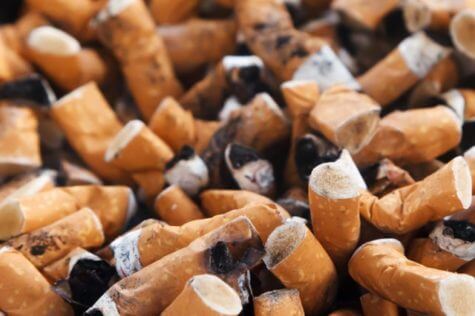MELBOURNE, Australia — There’s little appeal to walking on sidewalks littered with cigarette butts. Australian researchers may have come up with a solution, however, that may prove worthwhile for smokers’ leftovers being one with the ground.
Researchers at RMIT university tested a mixture of asphalt and discarded cigarette butts to see if it could be a viable recycling program used in major cities in the future. The results so far are encouraging and could lead to the integration of some of the trillions of cigarette butts discarded every year into the environment into viable building materials.
It’s estimated that about 6 trillion cigarette butts are produced worldwide every year. The vast majority of those butts are thrown away into the environment, where they and the toxins trapped within them slowly decay and leech into the water supply and soil. The study’s authors sought to come up with a way to somehow recycle cigarette butts in a more practical way.

“I have been trying for many years to find sustainable and practical methods for solving the problem of cigarette butt pollution,” says Dr. Abbas Mohajerani, the leader of the study and senior lecturer at RMIT, in a release. Mohajerani earned worldwide praise in 2016 after discovering a way to use cigarette butts in the production of bricks. His latest idea is yet another groundbreaking development that could, literally, pave the way to a cleaner environment.
“In this research, we encapsulated the cigarette butts with bitumen and paraffin wax to lock in the chemicals and prevent any leaching from the asphalt concrete. The encapsulated cigarettes butts were mixed with hot asphalt mix for making samples,” Mohajerani explains. “Encapsulated cigarette butts developed in this research will be a new construction material which can be used in different applications and lightweight composite products.”
The team found that not only does the asphalt pass heavy traffic tests, it also reduces thermal conductivity, lending the mixture to two problems: waste and the urban heat island effect.
“This research shows that you can create a new construction material while ridding the environment of a huge waste problem,” says Mohajerani.
The full results of Mohajerani’s study was published in the journal Construction and Building Materials.
